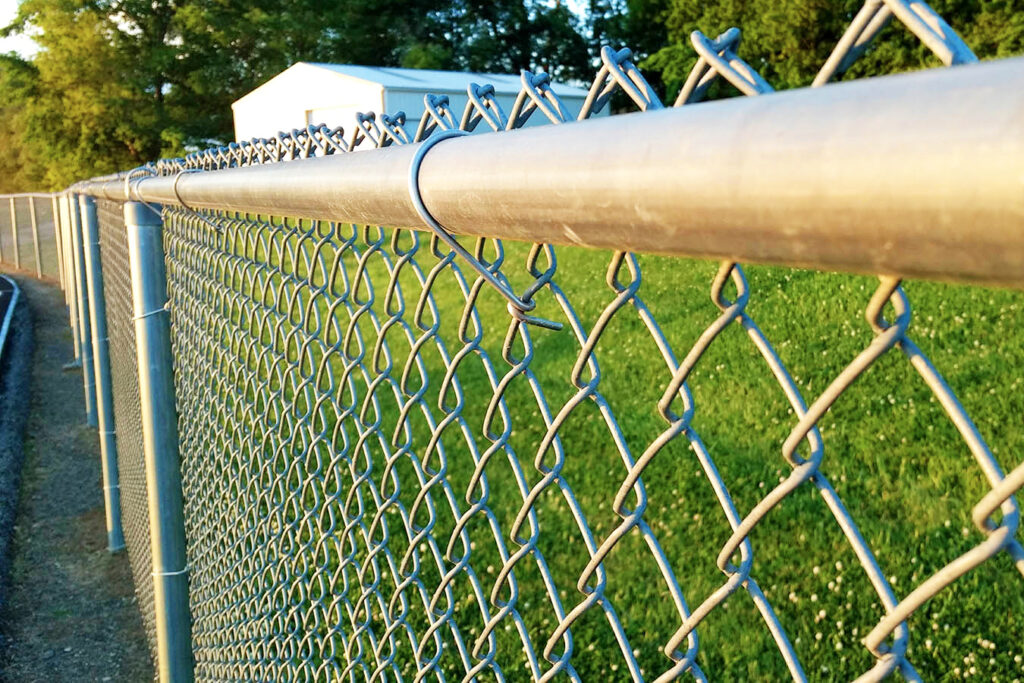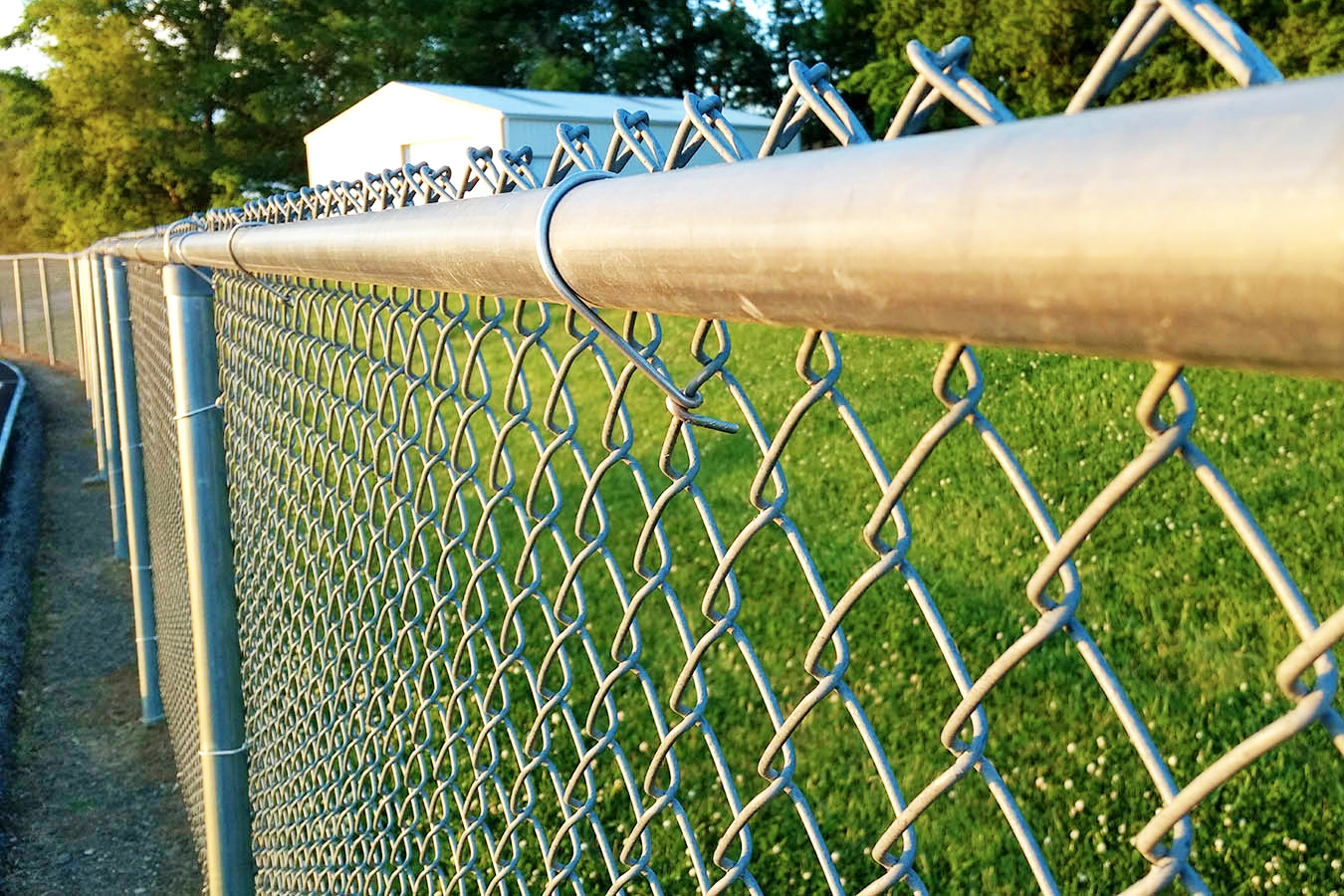
Chain Link Fence Posts: A Comprehensive Guide to Selection and Installation
Chain link fences are a ubiquitous sight, providing security and boundary definition for residential, commercial, and industrial properties. At the heart of any chain link fence system lie the chain link fence posts. These posts are the structural backbone, providing the necessary support and stability for the entire fence. Choosing the right chain link fence posts and installing them correctly is crucial for a long-lasting and effective fence. This guide will delve into the various aspects of chain link fence posts, from materials and sizes to installation techniques and maintenance tips.
Understanding the Importance of Quality Fence Posts
The longevity and effectiveness of a chain link fence hinge significantly on the quality of its chain link fence posts. Substandard posts can lead to a host of problems, including:
- Sagging: Weak posts will bend or lean under the weight of the chain link fabric, resulting in an unsightly and compromised fence.
- Instability: Inadequate post depth or improper installation can cause the fence to sway or even collapse in strong winds.
- Premature Failure: Inferior materials are susceptible to rust, corrosion, and other forms of degradation, shortening the lifespan of the entire fence.
- Security Breaches: A compromised fence is easily breached, defeating the purpose of security and boundary definition.
Investing in high-quality chain link fence posts and ensuring proper installation are essential for a secure, durable, and aesthetically pleasing fence. [See also: Chain Link Fence Installation Guide]
Materials Used for Chain Link Fence Posts
Chain link fence posts are typically made from steel, although other materials like aluminum and vinyl-coated steel are also available. Here’s a breakdown of the most common options:
Galvanized Steel
Galvanized steel is the most widely used material for chain link fence posts. The galvanization process involves coating the steel with a layer of zinc, which provides excellent protection against rust and corrosion. Galvanized steel posts are strong, durable, and relatively affordable, making them a popular choice for a wide range of applications.
Aluminum
Aluminum chain link fence posts are lighter than steel and highly resistant to corrosion. This makes them a good option for coastal areas or other environments with high levels of moisture or salt. However, aluminum is generally more expensive than steel and may not be as strong.
Vinyl-Coated Steel
Vinyl-coated steel chain link fence posts offer an extra layer of protection against the elements. The vinyl coating not only enhances corrosion resistance but also provides a more aesthetically pleasing finish. These posts are available in a variety of colors to match the chain link fabric and surrounding landscape. [See also: Chain Link Fence Cost Comparison]
Types of Chain Link Fence Posts
Different types of chain link fence posts serve specific functions within the fence system:
Line Posts
Line posts are the most common type of chain link fence posts. They are installed at regular intervals along the fence line to provide support for the chain link fabric. Line posts typically have loop caps that allow the fabric to be easily attached using tension wire.
Terminal Posts
Terminal posts are located at the end points, corners, and gate locations of the fence. They are designed to withstand greater tension and are typically larger in diameter and set deeper in the ground than line posts. Common types of terminal posts include:
- End Posts: Located at the beginning and end of the fence run.
- Corner Posts: Installed at each corner of the fence.
- Gate Posts: Support the weight and operation of the gate.
Brace Posts
Brace posts provide additional support to terminal posts, preventing them from leaning or bending under the tension of the chain link fabric. They are typically installed at an angle, connected to the terminal post and the ground with brace bands and tension bands.
Choosing the Right Size and Gauge
Selecting the appropriate size and gauge of chain link fence posts is crucial for ensuring the fence’s structural integrity. The required size and gauge will depend on factors such as the height of the fence, the spacing between posts, and the local wind conditions.
Post Diameter
The diameter of the chain link fence posts is a key indicator of their strength. Larger diameter posts are better able to withstand tension and resist bending. Common post diameters range from 1 5/8 inches to 4 inches or more. Terminal posts generally require a larger diameter than line posts.
Post Gauge
The gauge of the steel refers to its thickness. A lower gauge number indicates a thicker and stronger post. For example, a 16-gauge post is thicker and stronger than a 19-gauge post. Thicker gauge posts are recommended for high-security applications or areas with strong winds.
Installing Chain Link Fence Posts: A Step-by-Step Guide
Proper installation is essential for ensuring the longevity and effectiveness of your chain link fence posts. Here’s a general guide to the installation process:
- Planning and Layout: Determine the fence line and mark the locations of all posts, including line posts, terminal posts, and gate posts.
- Digging Post Holes: Dig holes that are at least one-third the height of the post, plus 6 inches, and two to three times the diameter of the post. For example, for a 6-foot post, the hole should be at least 2.5 feet deep.
- Setting the Posts: Place the chain link fence posts in the holes, ensuring they are plumb (perfectly vertical). Use a level to check the alignment.
- Mixing Concrete: Prepare a concrete mixture according to the manufacturer’s instructions.
- Pouring Concrete: Pour the concrete into the holes around the posts, filling them to within a few inches of the ground surface.
- Curing Concrete: Allow the concrete to cure for at least 24-48 hours before proceeding with the rest of the fence installation.
- Attaching Hardware: Once the concrete is cured, attach the necessary hardware, such as post caps, brace bands, and tension bands.
Important Note: Always consult local building codes and regulations before installing a chain link fence. It’s also recommended to contact a professional fence installer if you’re not comfortable with the installation process. [See also: Hiring a Fence Contractor]
Maintaining Your Chain Link Fence Posts
Regular maintenance can help extend the life of your chain link fence posts and prevent costly repairs. Here are some tips:
- Inspect Regularly: Periodically inspect the posts for signs of rust, corrosion, or damage.
- Clean the Posts: Wash the posts with soap and water to remove dirt and debris.
- Repair Damage: Repair any damage promptly to prevent further deterioration.
- Apply Protective Coating: Consider applying a protective coating to the posts to enhance their resistance to rust and corrosion.
Cost Considerations
The cost of chain link fence posts can vary depending on the material, size, gauge, and quantity. Galvanized steel posts are generally the most affordable option, while aluminum and vinyl-coated steel posts tend to be more expensive. It’s important to compare prices from different suppliers to find the best deal. Remember to factor in the cost of installation, which can vary depending on the complexity of the project and the labor rates in your area.
Conclusion
Chain link fence posts are the foundation of any chain link fence system. Choosing the right posts and installing them correctly is crucial for a durable, secure, and aesthetically pleasing fence. By understanding the different materials, types, sizes, and installation techniques, you can ensure that your chain link fence will provide years of reliable service. Remember to prioritize quality and proper installation to avoid costly repairs and ensure the long-term performance of your fence. Whether you’re securing a residential property, defining a commercial boundary, or protecting an industrial site, investing in high-quality chain link fence posts is a worthwhile investment.

